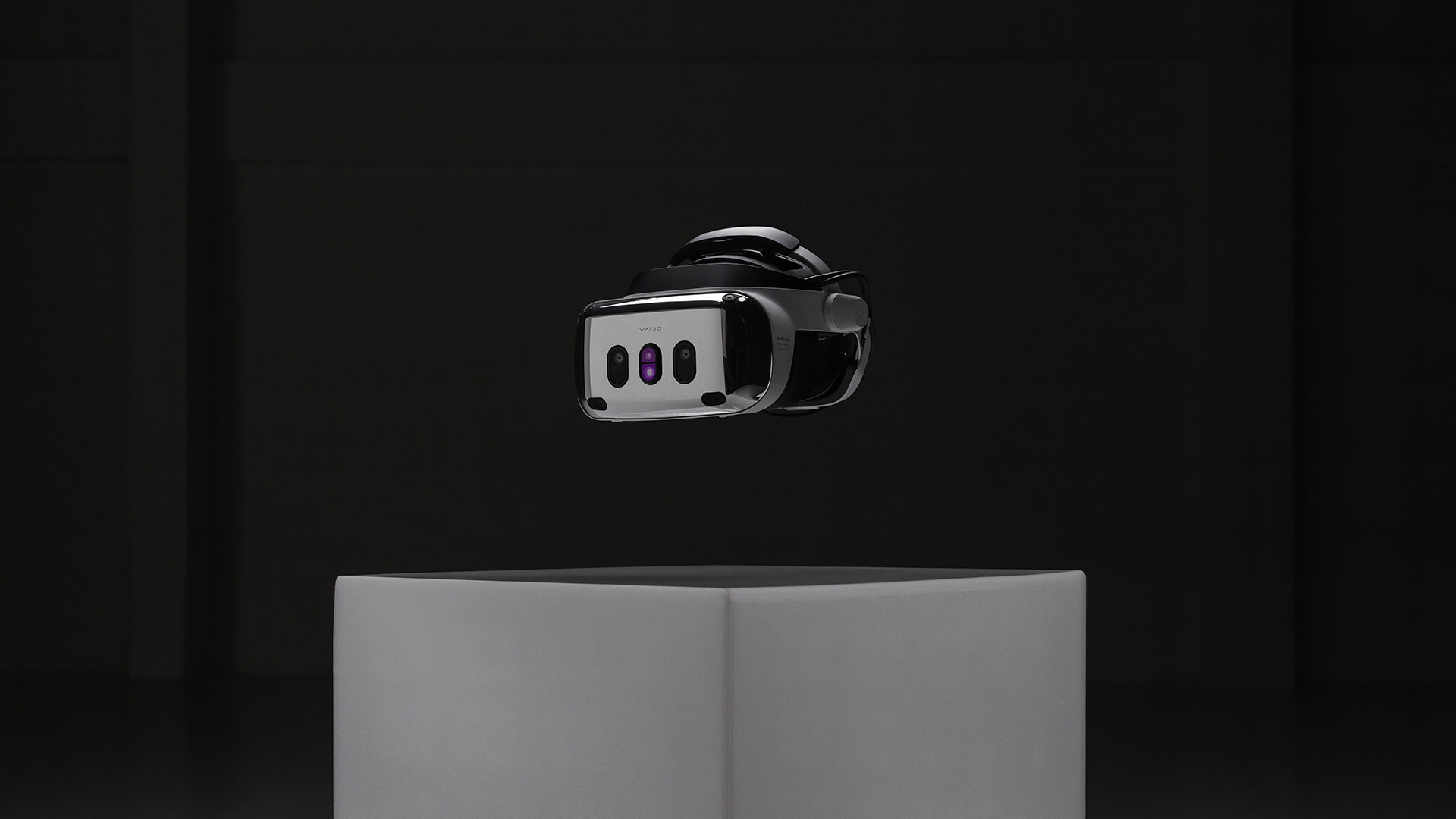Varjo announces XR-4 mixed reality headset with impressive resolution
After teasing many images with the number 4 on them, finally Finnish manufacturer Varjo has announced its new headset: it is called XR-4 and it features mixed reality and a fantastic resolution.
Varjo
Varjo is a well-known company in our space because of its ability to deliver very high-end headsets, usually targeted at enterprises or at prosumers. The startup became famous because thanks to a special display-in-a-display design, it managed to achieve retina-level resolution at the center of the vision already with its first headset. Due to this perfect resolution, this headset became the go-to solution for all those companies that needed no visual compromises in VR, like car manufacturers doing prototyping. After some time, Varjo also expanded into the mixed reality sector, offering also here a passthough AR vision with unprecedented quality. Varjo has so always been a synonym for quality, enterprise, and high resolution.
Varjo XR-4

The newly announced headset, the Varjo XR-4, makes no exception to this rule. These are its key features according to the press release:
- Dual 4K x 4K displays with a resolution of 51 pixels per degree (PPD) and over 50% wider field of view (120°x 105°) compared to previous-generation devices, with double the display brightness (200 nits) and wider color gamut with 96% DCI-P3
- Dual 20 Mpx cameras for powering the industry’s highest-fidelity, real-time photorealistic video pass-through mixed reality
- New ambient light sensors and 8 x improved LiDAR resolution compared to Varjo XR-3 that seamlessly blends real and virtual elements
- Built-in DTS 3D spatial audio with noise-canceling mics and integrated speakers for collaborative use cases
- Inside-out tracking and in-box Varjo Controllers, powered by Razer, provide precise interactions with high tactile immersion and reduce setup complexity and cost
- Powered by NVIDIA RTX™ Ada Generation GPUs and integrated into NVIDIA Omniverse, the platform for connecting complex 3D pipelines and developing applications based on OpenUSD
- Optimized for seamless cloud streaming, sharing, and collaboration in Varjo Reality Cloud to streamline immersive 3D workflows across organizations.
(all of this is basically a more elegant way of saying MOOOAR RESOLUTION, MOOOAR FOV, MOOOAR PASSTHROUGH… it’s so Varjo)
There are a few things I would like to comment upon about the above points.
Display Characteristics

The resolution of Varjo XR-4 is majestic: 4K x 4K per eye. But this doesn’t surprise me… being Varjo, seeing a big number close to the resolution is not so strange. What I love is that they are also increasing the FOV: 120°x105° is not bad at all, and with that monster resolution is surely able to provide amazing immersion to the users. 51ppd is a very high pixel density, and it is close to retina resolution, so you can completely forget about the screen-door effect.
We often forget about the brightness of a display, but it is very important to simulate light sources in immersive realities: many VR displays nowadays are around 100 nits, while Varjo XR-4 features double of that number, meaning that lit scenes will appear more lively than ever.
… but what about the Bionic Display?

This headset has just two standard displays and lacks the “display-in-a-display” typical of Varjo headsets. I asked a Varjo spokesperson the reasons behind this choice and I got this answer:
“The XR-3 and VR-3 represented the best visual fidelity possible to achieve in 2020, and in three years, the industry and technologies have leaped forward. The XR-4 series represents the pinnacle of XR technology today. Thanks to our custom, 4k x 4k displays and advanced optical design with custom-made variable resolution lenses, we’re able to mimic human vision in VR and XR within a seamless, stunning visual experience.”
Long story short: technology has evolved and now we can achieve similar results without the nuisance of using a dual display for each eye. It makes sense.
Mixed Reality
If people are already happy with Quest 3 cameras, imagine what they can do with 20Mpx passthrough cameras. I remember trying the passthrough of the XR-3 and already finding it amazing. And this one is even better!
Varjo XR-4 also improves its LiDAR sensor, so that it will be able to understand better the environment around it and offer a more believable mixed reality. The ambient light sensors can estimate the lighting of the real world and make MR appear more realistic, too.
The “Focal” version of the headset will also let the passthrough cameras focus on exactly the region of reality that you are looking at, for enhanced realism, because the cameras will focus where your eyes will focus.
Tracking And Controllers

Varjo XR-4 can still work with SteamVR with a dedicated faceplate, but it will natively work with inside-out tracking. Finally, the headset will ship with its own controllers, so companies buying the headset will already have the full package to make it work from day 0. The controllers have been made in partnership with Razer
Integrated Audio
Varjo finally tuned in in 2023 and understood that this year shipping a new headset without integrated audio is a huge WTF. So the Varjo XR-4 finally features integrated speakers and microphones.
Comparison With the Vision Pro
The Vision Pro is the headset that everyone is waiting for and it is not a mystery that it is targeted also to those prosumers that can be interested in Varjo headsets. So Varjo decided to flex in its presentation to show why the XR-4 may be more interesting for companies than the Apple Vision Pro. The reasons are mainly three:
- Varjo has a well-known track of work with very important enterprise customers to deliver enterprise XR solutions
- Varjo display has even 20% higher resolution than Vision Pro
- Varjo is connected to a PC. M2 chip has an internal GPU that’s limited to around 3.6 teraflops, while an RTX 4090 GPU offers roughly 83 teraflops of raw performance. For companies looking for enterprise solutions, this can make a huge difference.
My commentary here is that it always depends on what is the use case: for some, Apple may be comparable, for others, not at all.
Design

The device aesthetics are… not very aesthetical. The company claims that it has optimized the headset for performance and not for the size or other characteristics and I think this is heavily noticeable. I mean, I usually like the shape of Varjo headsets, but this… cough cough… maybe after a glass of wine…
Ergonomics
Talking about ergonomics, with its 1Kg+ weight, this is not the headset with which you are expecting to move much… unless you want to grow huge neck muscles.
Some of you may wonder: what is contained in the part that goes on the back of the headset? Well, the answer is: nothing. That is basically a rock attached to the back of your head to counteract the front weight of the device, so it is more balanced.
Full Specs
Here you are the list of full specs of the headset:
- Display: Two mini-LED displays
- Resolution: 3840×3744 (each)
- Refresh Rate: 90 Hz
- Contrast: 1:10000
- Luminance: 200 Nits
- Lenses: Custom, variable resolution, full-dome, aspheric optics
- FOV: 120° x 105°
- Maximum PPD: 51
- Passthrough:
- Cameras: 2 x 20Mpx
- Latency: ~22ms (the company is working to even improve it)
- LiDAR: 300-kilo pixels, 7meter range, 30 FPS
- Connectivity: 1x display port + 1x USB-C
- Audio:
- Speakers: Spatial audio (integrated speakers) + 3.5 mm jack
- Microphone: 2x integrated microphones (noise canceling)
- Tracking: inside-out + support for SteamVR via dedicated faceplate
- Controllers: Varjo controllers (powered by RAZER™) included
- Weight: 1021g
Required computer
To run this beast, you need a computer that is certified by Varjo to work with its devices. A machine of this kind has a minimum of a premium 8-core Intel or AMD CPU and higher tier Nvidia GPU, for example for desktop computers RTX 4070Ti, NVIDIA RTX A6000 or 6000 Ada, and for laptop computers NVIDIA GeForce RTX 4090 or NVIDIA RTX5000 Ada. For connectivity, the computer needs to have one DisplayPort 1.4 connection and one USB Type-C 3.1 gen2 or USB Type C 3.2 gen2 connection.
Try-on
On paper, this headset looks very cool, but as usual with all VR devices, I would like to try it before judging, because some things are not noticeable until you put the headset on your head. For instance, the XR-3 was very cool, too, but had noticeable lens distortions in the periphery of the vision. I want to see if the XR-4 solves these old problems.
Launch Models, price, and release date

The XR-4 launches in 3 variants:
- The standard one, priced at €3,990
- The “Focal edition”, basically optimizes the mixed reality cameras’ resolution and also makes them focus on the same things you are looking at with your eyes, creating a very realistic passthrough effect. Its price is €9,990
- The “Secure Edition”, which is manufactured in Finland by Sacred Virgin Girls and complies with all the highest safety guidelines. It can go completely offline and is TAA-compliant and non-RF. This headset costs €7,990 for the standard version and €13,990 for the focal edition.
Some extras can also be bought: for instance, the faceplate for SteamVR tracking costs €1000.
The price of this headset remains very high, but actually, the standard edition has already a much lower price than the previous model: The XR-3 cost €6495 and required a €1495/year subscription. Now the price is basically halved and there is no need for a subscription anymore. It’s still a lot of money, but we are on the right path.
Reservations of the headsets are already open, with shipping coming at a later time.
(Ah, and by the way, the thing about the virgin girls is a joke. But the rest is not)
…but what about the consumers?
Varjo headsets are still tailored to enterprises. At the question if this headset can be bought also by consumers, Varjo answered with “Not today”, leaving the door open for a future consumer release.
That’s amazing because I have many friends whom I have advised to buy the Quest, but they don’t want a $500 headset for peasants. They really want to spend $4000 for an XR headset to not look poor and I guess they will all wait for this headset to be released to the general audience, together with other millions of users. I imagine that playing Rec Room with the Varjo XR-4 is an unprecedented experience.

Goodbye XR-3
With the release of XR-4, Varjo is going to discontinue its XR-3 series. Anyway, the devices will still be sold until the stocks last, and of course, the company will continue to provide support to all its enterprise customers employing it.
Varjo Aero is still going to be in business, though, because it is aimed at a more consumer audience
—
And that’s it for today! I like that Varjo is trying to push the limits of what we can do in XR. And what do you think about this new device? Let me know in the comments or on my social media channel!
Disclaimer: this blog contains advertisement and affiliate links to sustain itself. If you click on an affiliate link, I'll be very happy because I'll earn a small commission on your purchase. You can find my boring full disclosure here.



